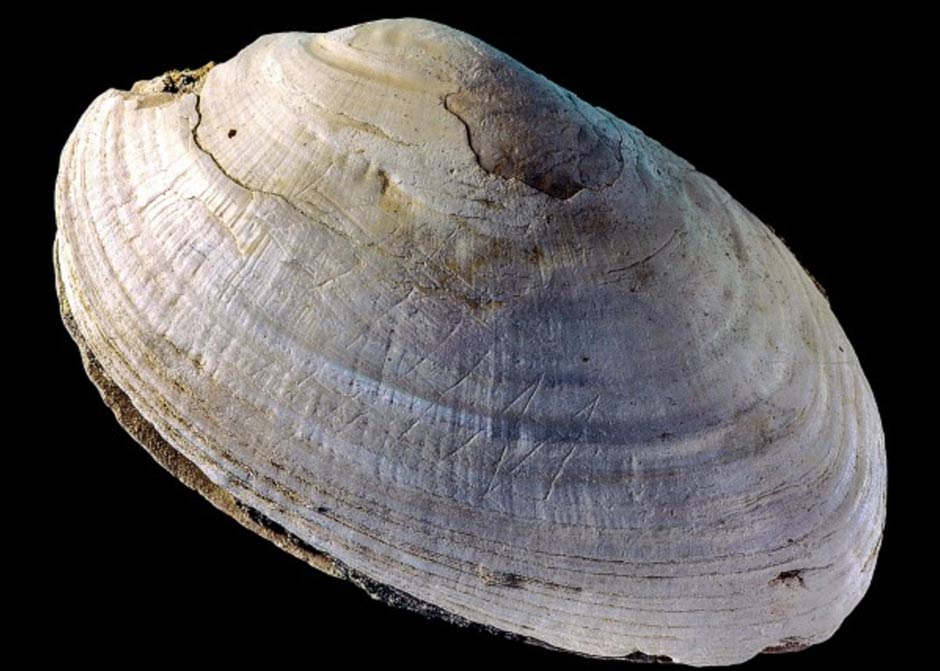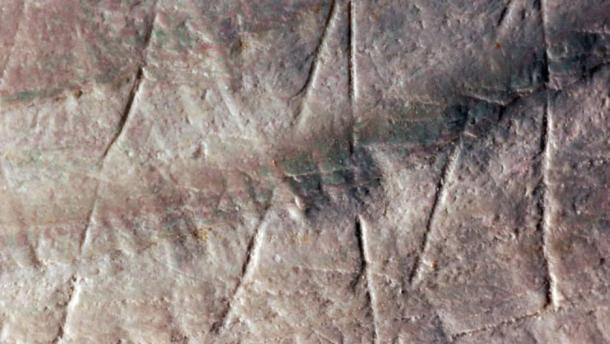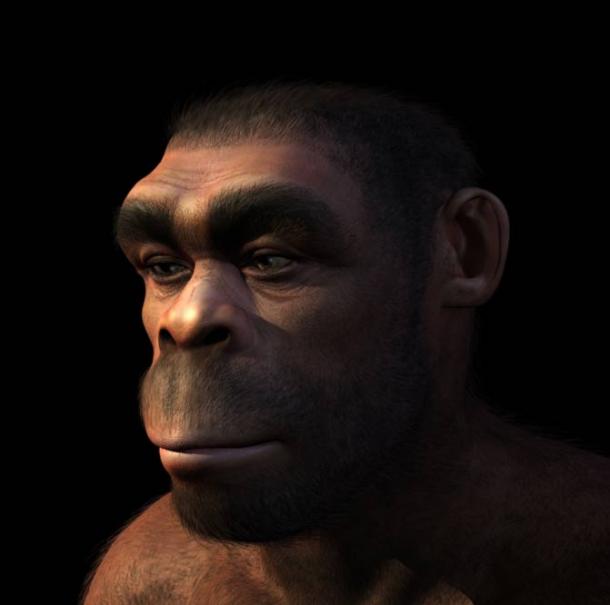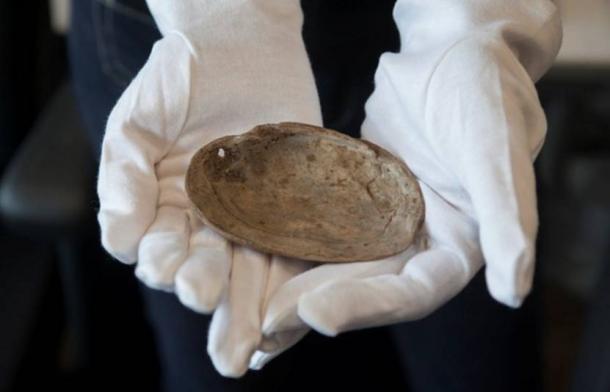
New research conducted on a mollusk shell found over a century ago on the Indonesian island of Java, has revealed that it contains the oldest engraving ever found and that it was almost certainly etched by a Homo erectus, an early human ancestor that emerged around 1.9 million years ago and became extinct around 150,000 years ago. The discovery challenges preconceived notions about human ancestors, showing that, like Homo sapiens, they produced abstract design or perhaps even an early form of written communication.
The shell was among a collection of freshwater mollusk Pseudodon shells stored in the Naturalis Museum in the Netherlands, which had been gathered in the 1890s at a site known as Trinil on the island of Java, in an area where archaeologists had previously found remains and artifacts belonging to Homo erectus. In 2007, Stephen Munro, an archaeology graduate student, was studying photographs of the shells when he spotted one engraved with zigzag-like lines. Considering the shells had been dated to between 430,000 and 540,000 years old, Munro was astounded to find the etchings on the shell as they are at least 300,000 years old then any other confirmed engravings of this nature.
“[T]he oldest known engravings date back 100,000 years and were made by modern humans—the only species thought to be capable of making abstract designs,” writes ScienceMag.

Detail of the engraving on a fossilized Pseudodon
shell from the Trinil site in Indonesia. (Wim Lustenhouwer/VU University
Amsterdam)
Josephine Joordens, a post-doctoral researcher at Leiden University in the Netherlands, and colleagues, have just published a paper on the discovery in the journal Nature, revealing that discovery provides evidence for symbolic activity and shows that “engraving abstract patterns was in the realm of Asian Homo erectus cognition and neuromotor control.” While to many this may seem unsurprising, the finding challenges conventional perspectives about the evolution of human behaviour.

Portrait of a Homo erectus male. Source: BigStockPhoto
According to a news release from Leiden University, the engraving “clearly pre-dates the weathering processes on the shell arising from fossilization. The study has excluded the possibility that the pattern could have been caused by animals or by natural weathering processes and shows that the zigzag pattern is the work of Homo erectus.” Francesco d’Errico, an archaeologist at the University of Bordeaux in France known for his studies of similarly engraved objects in Africa and Europe, was able to demonstrate that the marks had been etched in one session, by one person using a sharp tool. Weathering of the engraving also proves that the engraving was not a modern-day addition.
In addition to the engraving, the researchers found that one of the shells, with an extremely sharp edge, had been used as a tool of some sort, while a third of the shells, from a collection of 166, had man-made holes drilled through them, right where a muscle that keeps the shell closed is found. It is believed the holes were made using shark teeth, also found at the site, in order to open the shells so they could be eaten.

One of the shells showing a hole drilled through
it where a muscle that keeps the shell closed is found. Credit: Henk
Caspers, Naturalis, Leiden, the Netherlands.
While some scientists remain skeptical that such engravings could be made by Homo erectus, the multi-disciplinary and multi-national team of more than twenty scientists that studied the shell, are adamant that the geometric engravings demonstrate that symbolic actions are not solely a human behavior.
"It's a species that before we have thought wasn't capable of making things like this," said Joordens. "... Something that we recognize as typically human was produced by Homo erectus.”
Featured image: This etched shell from Java was found at the site where Homo erectus was discovered. Credit: Wim Lustenhouwer/VU University Amsterdam
By April Holloway - See more at: http://www.ancient-origins.net/news-evolution-human-origins/500000-year-old-shell-engraved-homo-erectus-challenges-beliefs-020122#sthash.N14lLEYS.dpuf